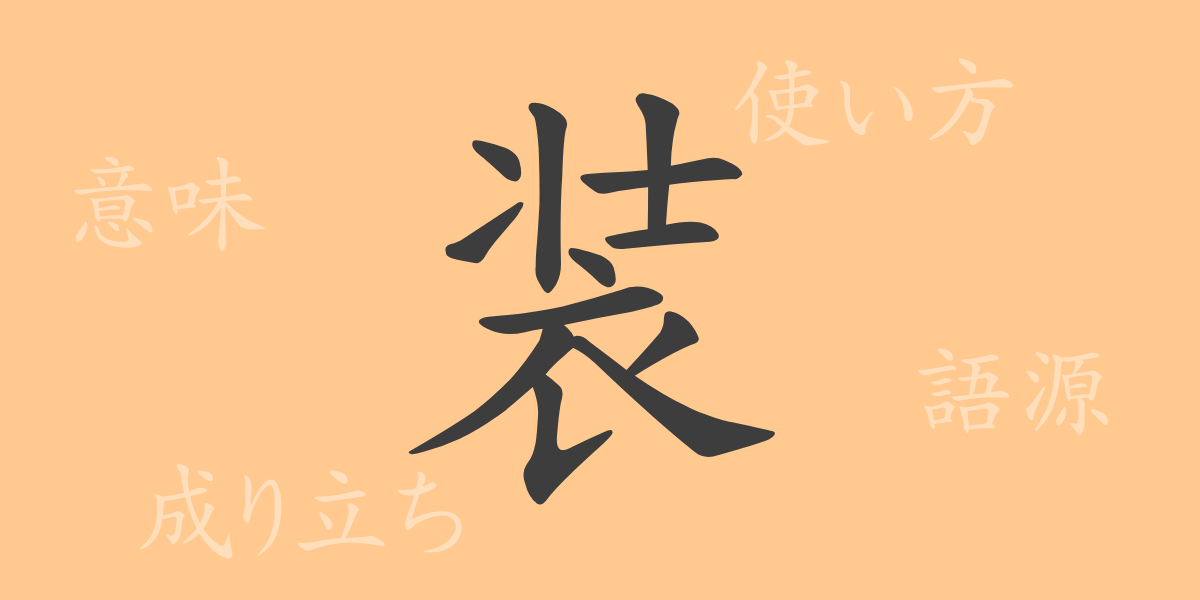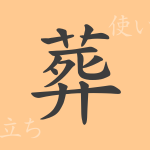The beauty of the Japanese language is also reflected in its delicate characters. The Kanji ‘装’ (そう, sō), one of the commonly used characters in Japanese, embodies a range of meanings from physical attire to inner feelings, evoking the depth of Japanese culture. This article delves into the origins and modern uses of ‘装’, exploring its allure.
Origins of 装 (そう – Sō)
The Kanji ‘装’ traces back to ancient China. Originally an ideogram depicting the arrangement of clothing, it evolved over time to signify not only personal grooming but also the embellishment of objects in various contexts.
Meaning and Usage of 装 (そう – Sō)
‘装’ encompasses meanings such as ‘to wear clothes or accessories’, ‘to decorate or beautify appearance’, and ‘to equip or prepare devices’. It is also used metaphorically to mean ‘to hide one’s true feelings’. Commonly, it functions as a prefix in nouns and verbs.
Readings, Stroke Count, and Radical of 装 (そう – Sō)
How is ‘装’ represented in Japanese?
- Readings: On’yomi (音読み) ‘ソウ’ (Sō), ‘ショウ’ (Shō), Kun’yomi (訓読み) ‘よそおう’ (yosoou)
- Stroke Count: ‘装’ consists of 12 strokes.
- Radical: The radical of this Kanji is ‘衣’ (ころもへん – koromohen), related to clothing.
Phrases and Idioms Using 装 (そう – Sō) and Their Meanings
Phrases and idioms including ‘装’ are abundant in Japanese. For example, ‘装飾’ (そうしょく, sōshoku) means to decorate, ‘仮装’ (かそう, kasō) refers to costuming or masquerading, and ‘身を装う’ (みをよそおう, mi o yosoou) means to assume a certain appearance. These expressions showcase the versatility of ‘装’ in various contexts.
Conclusion on 装 (そう – Sō)
The meanings embedded in a single Kanji can be profound, and ‘装’ is a prime example. From dressing up to concealing one’s emotions, this character expresses the richness of the Japanese language. Its use is prevalent not only in everyday life but also in literature and the arts, playing a significant role and enhancing the beauty of the Japanese language.

























